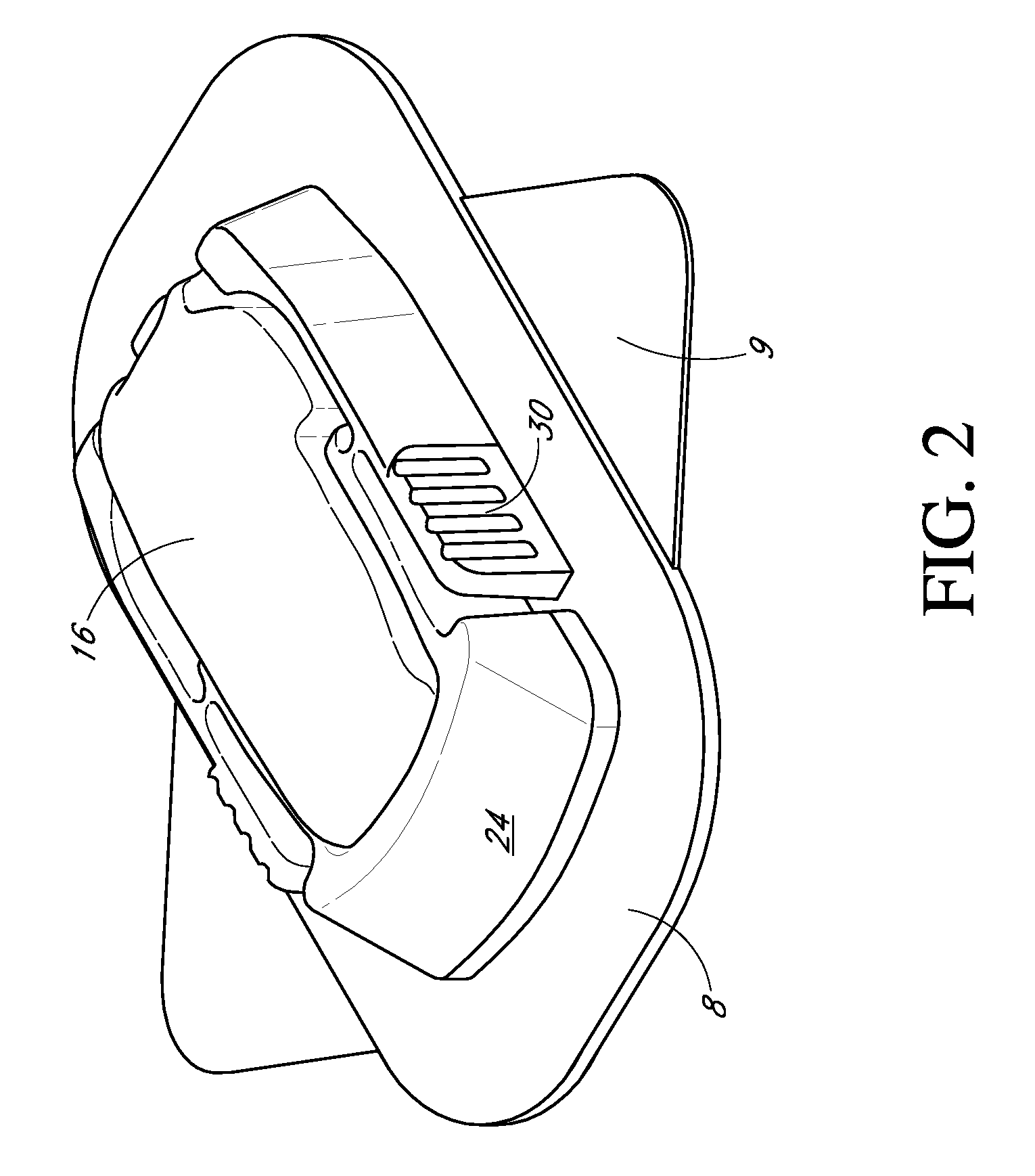Low oxygen in vivo analyte sensor
a low oxygen in vivo analyte and sensor technology, applied in the field of systems and methods for measuring analyte in a host, can solve the problems of inability to know the blood glucose value of the patient, incur dangerous side effects, and physiological derangements
- Summary
- Abstract
- Description
- Claims
- Application Information
AI Technical Summary
Benefits of technology
Problems solved by technology
Method used
Image
Examples
example 1
[0406]FIG. 25A is a graphical representation showing transcutaneous glucose sensor data and corresponding blood glucose values over time in a human. The x-axis represents time, the first y-axis represents current in picoAmps, and the second y-axis represents blood glucose in mg / dL. As depicted on the legend, the small diamond points represent the current measured from the working electrode of a transcutaneous glucose sensor of a preferred embodiment; while the larger points represent blood glucose values of blood withdrawn from a finger stick and analyzed using an in vitro self-monitoring blood glucose meter (SMBG).
[0407]A transcutaneous glucose sensor was constructed according to the preferred embodiments and implanted in a human host where it remained over a period of time. The graph illustrates approximately 3 days of data obtained by the electronics unit operably connected to the sensor implanted in the human host. Finger-prick blood samples were taken periodically and glucose c...
example 2
[0410]A wholly implantable glucose sensor generally as described above was constructed as is described in more detail with reference to U.S. Pat. No. 6,001,067. A sensing membrane was constructed comprising polyurethanes. The polyurethanes were prepared as block copolymers by solution polymerization techniques as generally described in Lyman [J. Polymer Sci. 45:49 (1960)]. Specifically, a two-step solution polymerization technique was used in which the poly(oxyethylene) glycol was first “capped” by reaction with a diisocyanate to form a macrodiisocyanate. The macrodiisocyanate was then coupled with a diol (or diamine) and the diisocyanate to form a block copolyetherurethane (or a block copolyurethaneurea). The resulting block copolymers were tough and elastic and could be solution-cast in N,N-dimethylformamide to yield clear films that demonstrated good wet strength when swollen in water.
[0411]A mixture of 8.4 g (0.006 mol), poly(oxyethylene) glycol (CARBOWAX® 1540, Union Carbide), ...
example 3
[0431]A transcutaneous glucose sensor was constructed according to an embodiment described above and implanted in a human host where it remained over a period of time. The graph of FIG. 28A illustrates approximately 1 week of data obtained by the electronics unit operably connected to the sensor transcutaneously inserted in the human host. Finger-prick blood samples were taken periodically and glucose concentration measured by a blood glucose meter. The graph shows the transcutaneous sensor data obtained by the glucose sensor tracking glucose concentration as it rises and falls over time. The x-axis represents time; the y-axis represents current in picoAmps. As depicted on the legend, the small diamond points represent the current measured from the working electrode. The time-corresponding blood glucose values show the correlation of the sensor data to the blood glucose data, indicating appropriate tracking of glucose concentration over time.
[0432]FIG. 28B is a graphical representat...
PUM
 Login to View More
Login to View More Abstract
Description
Claims
Application Information
 Login to View More
Login to View More - R&D
- Intellectual Property
- Life Sciences
- Materials
- Tech Scout
- Unparalleled Data Quality
- Higher Quality Content
- 60% Fewer Hallucinations
Browse by: Latest US Patents, China's latest patents, Technical Efficacy Thesaurus, Application Domain, Technology Topic, Popular Technical Reports.
© 2025 PatSnap. All rights reserved.Legal|Privacy policy|Modern Slavery Act Transparency Statement|Sitemap|About US| Contact US: help@patsnap.com



